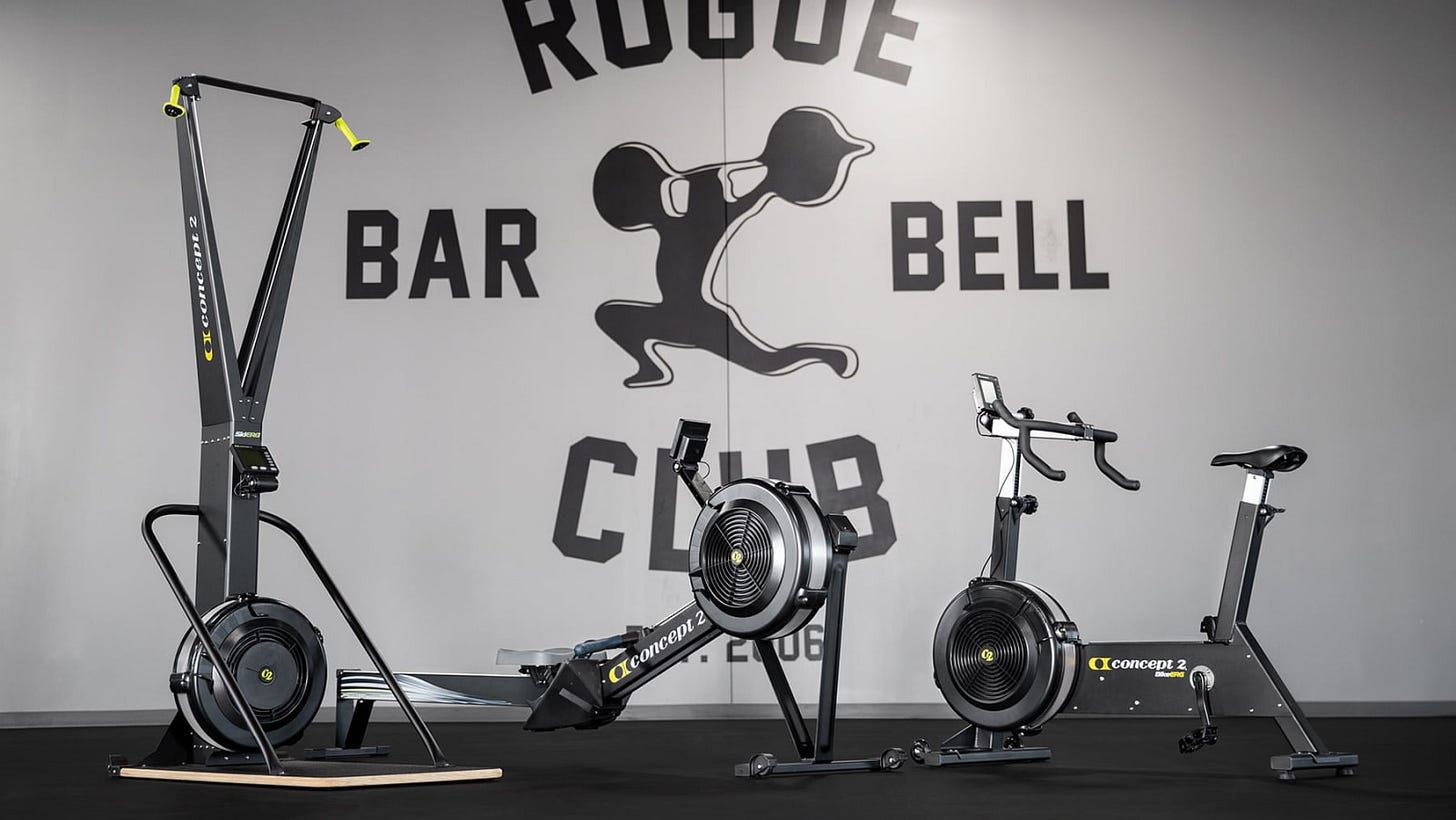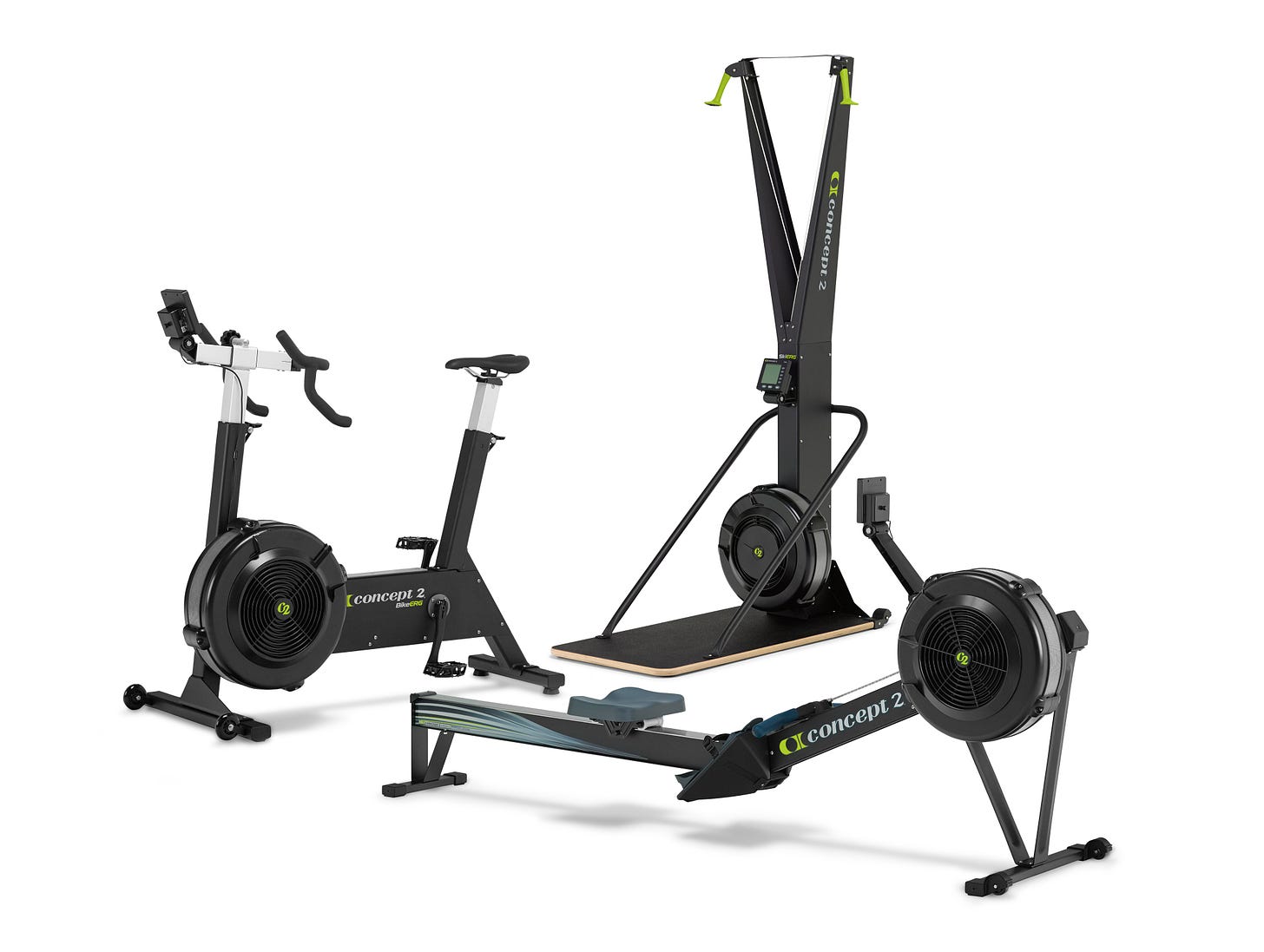I’m back on the road.
Earlier last week I shared my current 22’ travel schedule around the U.S. where I’m either visiting microgym models, hosting business seminars, or conducting a new season of Shoot The Shit interviews.
This past weekend kicked off my first trip of this tour to Washington, DC.
I got to visit the largest multi-unit MADabolic franchisee and learn more about how he’s been able to repeat success so many times over (keep an eye out for that content dropping soon).
Additionally, I was able to get a meetup together with some local microgym owners to drink, eat, and talk shop. This is always the thing that makes me feel at home when I’m on the road.
Traveling is one of my true love/hate relationships.
I don’t necessarily enjoy traveling, but I love the fact that I’ve been afforded the opportunity to do so.
Flight delays, the labyrinth of booking flights with corresponding hotels, and trying to ensure I don’t miss anything important back home with my family - that shit can be stressful.
But I simply deploy a tried and true business strategy that I’ve used for years and has always served me well - invest money that creates more bandwidth for yourself.
So here are a few recommendations I have for anyone who is willing to invest money to buy back more time, increased convenience, and a more enjoyable travel experience.
Buy a direct flight. It’ll save you time and lower chances of airline fuckups.
Upgrade to first-class if it’s a longer flight. (Seriously though, this is by far the best travel hack that you will ever experience. Yes, the tickets are more expensive, but if you have anything over 3+ hours - you’ll do it once and never go back).
Spend a little bit more to get a hotel closer to where you want to be, not where the cheapest Orbitz search result landed you. Nothing wrong with staying in a motel off a random interstate, but being in the downtown area of a city you’ve never visited can transform your trip.
Even if you’re there for business, carve out selfish time to explore, create a relationship and forge memories with this new city.
Look at the flight as a marathon work sesh that allows you to hammer out all this crap you’ve had on your to-do list forever. Legit, this is my favorite part of the flight because of the level of productivity that can be accomplished.
Airports suck, but lounges are awesome. Most airlines offer day passes or annual memberships to their lounge with complimentary food + drink, private working areas, and an overall less-stressful environment than trying to set up your laptop on a sticky table at the overcrowded Chili’s in terminal B.
The moral of the story is this - in business and life, it’s typically best to spend more to do and/or stress less. Try deploying that mindset next time you travel and let me know how it goes.
Below is my current travel schedule. If I happen to be in your city, please hit me up.
March 4-6 | Washington, DC x MADabolic
April 1-4 | Jupiter, FL x MADabolic
June 10-12 | Philly, PA x Few Will Hunt
July 21-25 | Cali Tour x Marcus Filly + LCK
August | Business Seminar (details soon)
Sep/Oct | Business Seminar x Active Life
Much love,
Stu
Do the common, uncommonly well.
Concept2 and CrossFit have a 15-year relationship, solidifying Concept2’s Ergs as timeless pieces of equipment to the CrossFit athlete and CrossFit community.
While CrossFit has always had relationships with various fitness equipment brands, how has Concept2 managed to stay relevant in CrossFit’s arena for so long?
In a recent Morning Chalk Up article, Greg Hammond, a long-time Concept2 marketing team member attributes the partnership to an early CrossFit tenant about virtuosity—doing the common uncommonly well.
He shared “I think (we have been successful) because we’re not trying to be trendy… We’re not flashy people, and I think, just like when Greg Glassman developed CrossFit, it wasn’t meant to be flashy. It was meant to give you results,” Hammond said.
He continued: “People have said our machines are ugly, and they’re basic and they’re boring, but we have been around for so many years because we have stayed true to accurate, doesn’t break…We still make all of our products in the United States, in Vermont.”
And Hammond believes that, as other companies and trends come and go, the Concept2 and CrossFit philosophies about virtuosity will continue to win long-term.
MY TAKE
Concept2 is a straightforward company focused on a straightforward mission - to build the best Ergs possible and bring rowing to the masses.
Rowing is ingrained in Concept2's origin story and the company's reason for being and has since added SkiErg and BikeErg product lines.
As a business owner, I've always respected the simplistic nature of their business model, but as a consumer, I'd find myself selfishly wanting them to deviate.
"When are they going to upgrade to a large touch screen?"
"Why doesn't this integrate with my Apple watch?"
"Can I pay extra to have this custom colored to my brand?"
These questions are all sentiments Concept2 has heard before from dumb customers like me - requests from the loud minority that, while they would be cool, would deviate from their core offering and complicate their operation.
The one thing that I've never complained about and still believe is one of Concept2's Unique Sales Propositions (USP) is the price point.
I mean, holy fuck. How are these things only $1,000?
The average cost of a commercial treadmill is $6,000, and the majority of commercial treadmills seem as if their key feature and promise is that they are guaranteed to break all the fucking time.
Meanwhile, Concept2 created a bombproof piece of equipment that you can beat the shit out of, slack on your maintenance, and it will still last you a decade+, easily.
So do I want our microgyms to emulate Concept2?
You bet your ass I do... and here's how we do it.
YOUR TAKEAWAY
There are three elements of Concept2's success to analyze and apply to your microgym:
1. The product is unique.
2. The product does the common, uncommonly well.
3. The product's price is lower than its perceived value.
"People discuss different, but they ignore average." - Jay Baer, author of Talk Triggers (highly recommended read if you want to level up your brand)
I constantly reference this quote, and Concept2 did exactly that without even planning for it, solely by focusing on a niche piece of conditioning equipment that the fitness industry previously ignored.
It wasn't until Greg Glassman experienced its potential when using it with his clients that the idea of using Rower Ergs in a fitness commercial-grade setting was indeed popularized.
See previously, ellipticals, treadmills, and stair steppers had a cuckold on cardio-based fitness applications. These machines were mindless, had two dozen buttons, and required minimal power output to use them.
It was evident how the Concept2 RowErg could stand alone in this sea of average equipment.
While their competitors were busy creating carbon copies of each other, C2 was able to win the eyeballs and intrigue of fitness-ers (mainly CrossFitters at that time) because it simply was unique in its product category.
Brining us to element one - the product is unique. So you want to get noticed and have a potential customer think, "Damn..that's different; let me try that."
BUT...being different isn't enough.
You actually have to have a great product that exceeds expectations.
Brining us to element two- the product does the common, uncommonly well - or Virtuosity as outlined in a CrossFit Journal article by Greg Glassman.
I adopted Glassman's Virtuosity teaching back in 2006, and it has allowed me to impact many lives and has made me a lot of money.
At its core, Virtuosity outlines the concept of doing the common, uncommonly well.
That's it. It's as simple as that.
C2's superpower is that its product works really well. It overcomes the plague of most commercial fitness equipment by being nearly maintenance-free in comparison, and it provides a workout stimulus no other cardio equipment can hold a candle to.
In addition to its uncommonly high build quality, C2 did something else that is very common but rarely executed well - they created a lexicon for the brand that was adopted by its users worldwide.
If you used a treadmill, your fellow fitness-er friends might ask, "How long did ya go for?" "How fast did you go?"
C2 took it to a whole new level, allowing non-specialists to share in the sacred words used by elite rowers. "What's your 1k time?" "Man, your positioning in the catch looks great!" "That workout killed me; I was holding a 1:45 split the entire time!"
Lastly, the third element, which IMO cemented C2 as a beloved brand amongst microgym owners - the product's price is lower than its perceived value.
Now, inevitably there are some cheap-as-fuck owners who are reading this and saying, "Whoa, Stu...they aren't cheap! $1,000 each + shipping?!? Waayyyy too expensive."
Let me put its price-point into perspective for my penny-pinching counterparts.
For your average globo-gym, the cardio equipment package they would require could easily tip $500k.
For a microgym owner? $5-10k for a starter location is fair.
Hell, at Urban MVMNT, we ran a 24 person in-place model with a 12 Erg model. That's 24 people per class using $12k in Ergs. ROI was achieved real fucking fast.
I'm not intimately aware of the profit margin on their products, but it doesn't really matter. All that matters is that the market perceives the product's value to exceed significantly the measly $1k they spend per unit.
My question for you: Is the price of your microgym lower than its perceived value?
Do prospects barely blink when you tell them the monthly membership cost is X amount?
Do customers think twice when you announce your regularly scheduled price raise? (And yes, price raises need to be regularly scheduled or built into the membership agreement. More on this topic in an upcoming Microgym University course).
Now some might think you're at the ceiling of pricing in comparison to your competitors, and you may be right...when compared to your competition. But perceived value doesn't have a ceiling, and it sure as hell has nothing to do with what the other guy charges.
The real challenge here is becoming so intimately connected to your avatar that you can uncover what that value proposition is for them. Convenience? Results? Experience? Brand status? That's the Rubix cube you need to figure out.
So from now on, when strategizing your business - ask yourself WWC2D- What would C2 do?
They would focus on their unique niche and not deviate for sex appeal or fad.
They would make sure the product worked better than most and exceeded expectations.
And they would price intelligently so that everyone felt like they were getting the best deal in town.
OK, now your turn.











